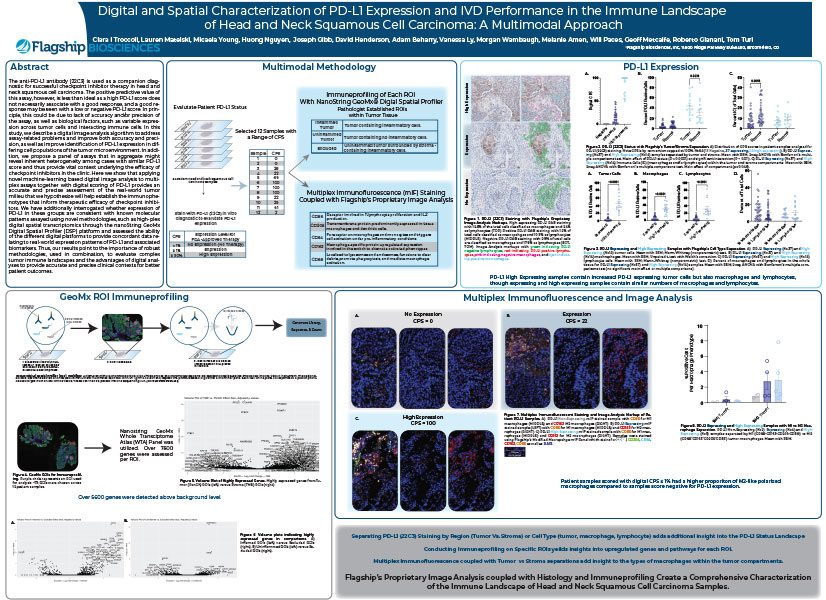Abstract:
The anti-PD-L1 antibody (22C3) is used as a companion diagnostic for successful checkpoint inhibitor therapy in head and neck squamous cell carcinoma. The positive predictive value of this assay, however, is less than ideal as a high PD-L1 score does not necessarily associate with a good response, and a good response may be seen with a low or negative PD-L1 score. In principle, this could be due to lack of accuracy and/or precision of the assay, as well as biological factors, such as variable expression across tumor cells and interacting immune cells. In this study, we describe a digital image analysis algorithm to address assay-related problems and improve both accuracy and precision, as well as improve identification of PD-L1 expression in differing cell populations of the tumor microenvironment. In addition, we propose a panel of assays that in aggregate might reveal inherent heterogeneity among cases with similar PD-L1 score and thus provide vital context underlying the efficacy of checkpoint inhibitors in the clinic. Here we show that applying novel machine-learning based digital image analysis to multiplex assays together with digital scoring of PD-L1 provides an accurate and precise assessment of the real-world tumor milieu that we hypothesize will help establish the immunophenotypes that inform therapeutic efficacy of checkpoint inhibitors. We have additionally interrogated whether expression of PD-L1 in these groups are consistent with known molecular patterns assayed using novel methodologies, such as high-plex digital spatial transcriptomics through the nanoString GeoMx Digital Spatial Profiler (DSP) platform and assessed the ability of the different digital platforms to provide concordant data relating to real-world expression patterns of PD-L1 and associated biomarkers. Thus, our results point to the importance of robust methodologies, used in combination, to evaluate complex tumor immune landscapes and the advantages of digital analyses to provide accurate and precise clinical contexts for better patient outcomes.

